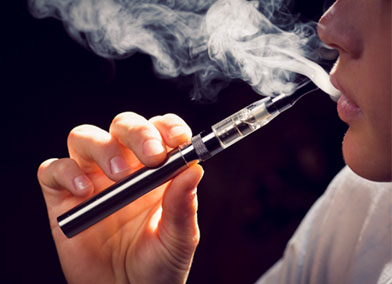With the development of the social civilization, people are more caring about the product nature, not only about the quality itself, but also the impact to the health and to the environment as well. Over the decades, given public health concerns, the tobacco industry has tried to find ways to make combustible cigarette smoking less harmful. However some of the changes such as added filters and marketing of “light” cigarette were an illusion of reduced harm. They were market successes that did not actually reduce harm to consumers. Today, electronic cigarettes (e-cigarettes) and vaping have garnered a reputation as a safer way to consume nicotine and possibly a way to quit combustible cigarettes. Especially recent years
disposable kits is rising sharply all over the world, which offers a more convenient way for new users who want to quit traditional smoking for a healthier lifestyle.
What is vaping or vaporizing?
TVaping or vaporizing is the word used to describe inhaling the aerosol produced by e-cigarettes or similar devices like vaporizers, vapor pens and disposable. Vaping or e-cigarettes as people may all know is nicotine delivery devices that have a
battery,
coil and commonly a
tank or can also be called as
atomizer for
eliquid storage. When the eliquid is heated, users inhale the aerosol. The eliquid are flavored and which usually contains nicotine, so that users experience a taste sensation as well as a hit of the same addictive stimulant found in cigarettes. Moreover, nowadays more and more 0 nicotine products appear on the market and are warmly welcomed by users, which also called nicotine-free products.
What will you benefit from vaping or e-cigarette compare to combustible cigarettes?
It’s hard to escape the facts about smoking. The health risks associated with cigarettes are well documented, and the large, graphic warnings on every pack are obvious. But when it comes to e-cigarettes, it will be much more easier to make a healthy decision.
The U.K. Department for Health and Social Care’s (DHSC) has acknowledged the role of vaping in smoking harm reduction, according to the U.K. Vaping Industry Association (UKVIA). It is often said that vaping is 95% safer than smoking. This estimate is based on comprehensive, independent reviews of the scientific evidence by both Public Health England (the English Government Public Health agency) and the Tobacco Advisory Committee of the UK Royal College of Physicians. The same 95% safer figure had earlier been estimated by a group of international experts in 2014 led by Professor David Nutt. The PHE and RCP reports were completely independent of that earlier review but came to the same conclusion. In the United States, the leading scientific body, the National Academies of Sciences, Engineering and Medicine concluded that e-cigarettes are “far less harmful” than combustible tobacco cigarettes, but did not actually give a percentage.
Conclusion
It is pretty certain that vaping is safer than cigarette smoking, but not without hazards. E-cigarettes have the potential to help smokers quit smoking, and the evidence indicates they carry a fraction of the risk of smoking cigarettes but are not risk free. If you don’t smoke you should not vape. However, if you are a smoker who can’t quit you will dramatically reduce your risk of dying from cancer, heart and lung disease if you switch to vaping. There is an opportunity for e-cigarettes to help tackle the high smoking rates among people with mental health problems, particularly in the context of creating smoke-free mental health units. How much less risky is it? Well, at present we can say that the long-term risk from vaping is at least 95% less than smoking. But I wouldn’t be surprised if it ends up being found to be more like 98% or 99% less risky. All in all, the best thing smokers can do for their health is to quit smoking completely and to quit for good.
